8 Shiny Tips That Boost Your Glass Recycling Game
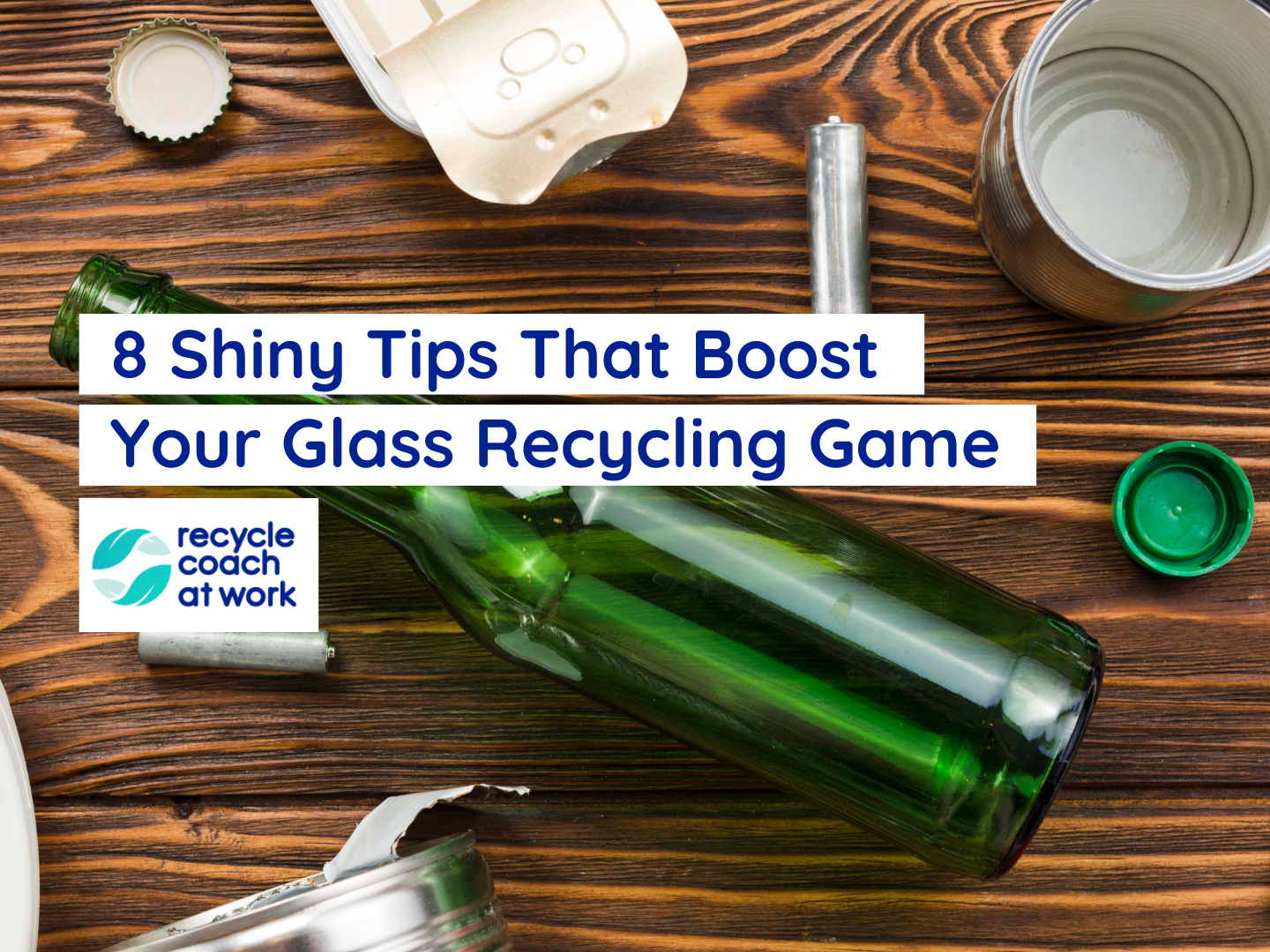
Is your company recycling glass with a sustainable end goal in mind?
With these 8 simple steps, your green team can introduce positive glass reform that helps your recycling program get as much value from the collected recycling materials as possible.
With recycling contamination rates on the rise due to more people working from home, it’s important to educate your employees about a potentially harmful material like glass.
In America, only one-third of the glass gets recycled. Experts say it’s not because of lack of technical knowledge, it’s because glass contamination and breakage rates are so high. Unlike most other recycling materials, glass is 100% recyclable and it never loses its quality.
When you boost your workplace glass recycling practices, you’re not just making sure used glass is recycled, you’re keeping quality material inside of the recycling loop!
Whether you’re back on premises or have adopted a partial remote model, a lot can still be done to enhance the way your company recycles glass. Restaurants, bars, clubs, and folk in the hospitality industry – now is your time to shine.
Here are 8 tips to get your glass recycling game where it needs to be.
#1: Know What Counts as Recyclable Glass
A few years ago, curbside recycling programs banned glass because it was causing so much material contamination. Many programs are back to accepting specific types, but it’s essential that you know what to recycle, what to collect separately to drop-off, and what to trash altogether.
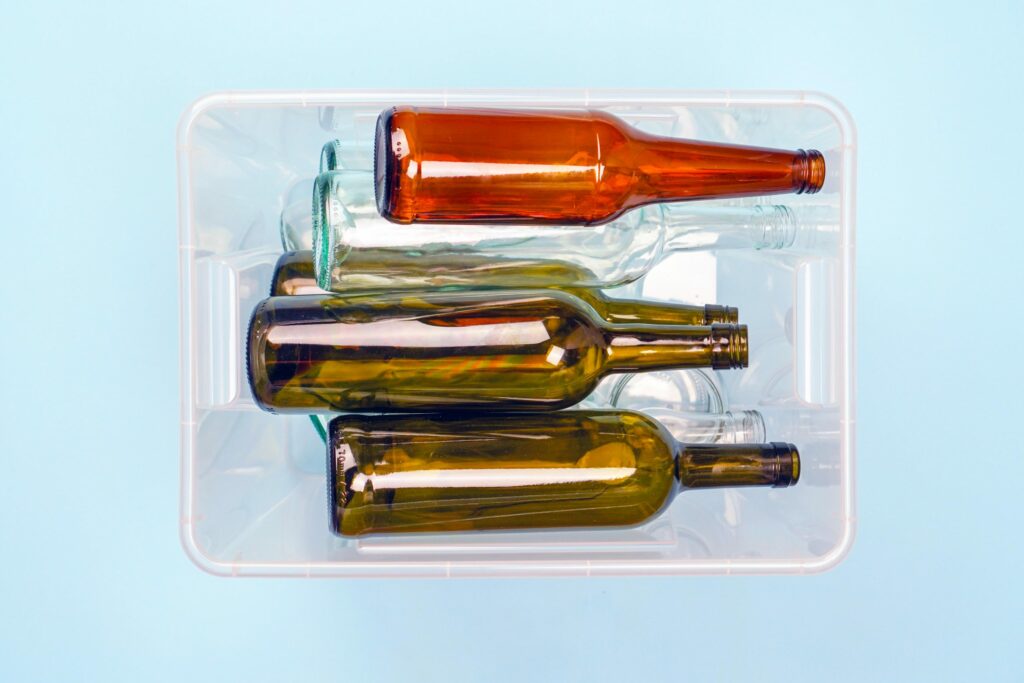
- Single stream curbside recycling programs accept certain colors of glass only
- Other types of glass may be recyclable in your area (for drop-off at a local center)
- Many types of non-food related glass should be binned
It’s best to check the Recycle Coach app to see the specific rules regarding your local programs.
#2: Don’t Recycle Broken Glass
Contrary to popular belief, broken glass is not recyclable in your local curbside program. In fact, attempting to recycle glass shards puts municipal collectors and recycling plant workers at risk.
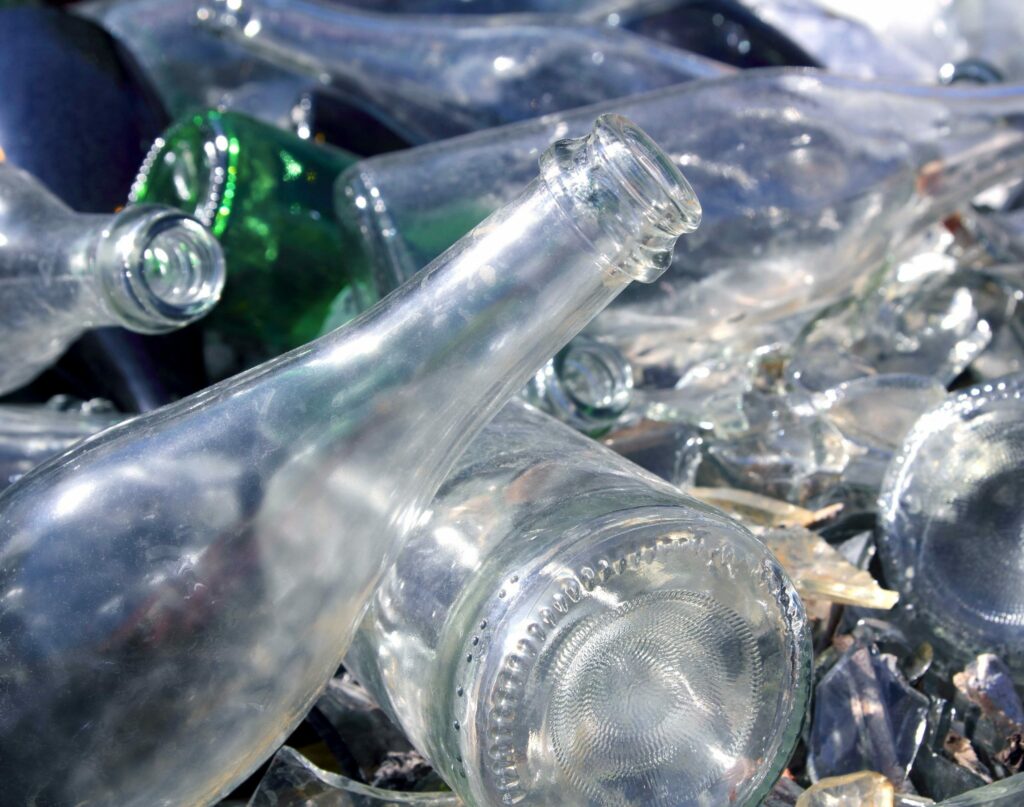
The fact is that once glass is broken, it’s much harder to sort, identify and recycle. Broken glass can be collected and dropped off at special programs, but these must be carefully contained. Teach your employees that broken glass is not meant for the single-stream recycling bin – wrapped or not.
#3: Prevent Glass Recycling from Breaking
The main glass items for curbside collection will be food and beverage glass. It’s important that you try and keep these intact and unbroken. It makes collecting, sorting, and processing a lot easier.

Deposit each glass container or bottle into the recycling bin, one at a time. It’s a good idea to line the bin with paper or cardboard recycling, to cushion the glass items. If your company receives stock deliveries, using cardboard from that works well, and keeps the glass secure in transit.
#4: Rinsing and Drying Glass
Glass is a major culprit for contaminating recycling materials, and this is made worse when the glass is soiled. Any excess food that can be visibly seen should be rinsed from the glass container.
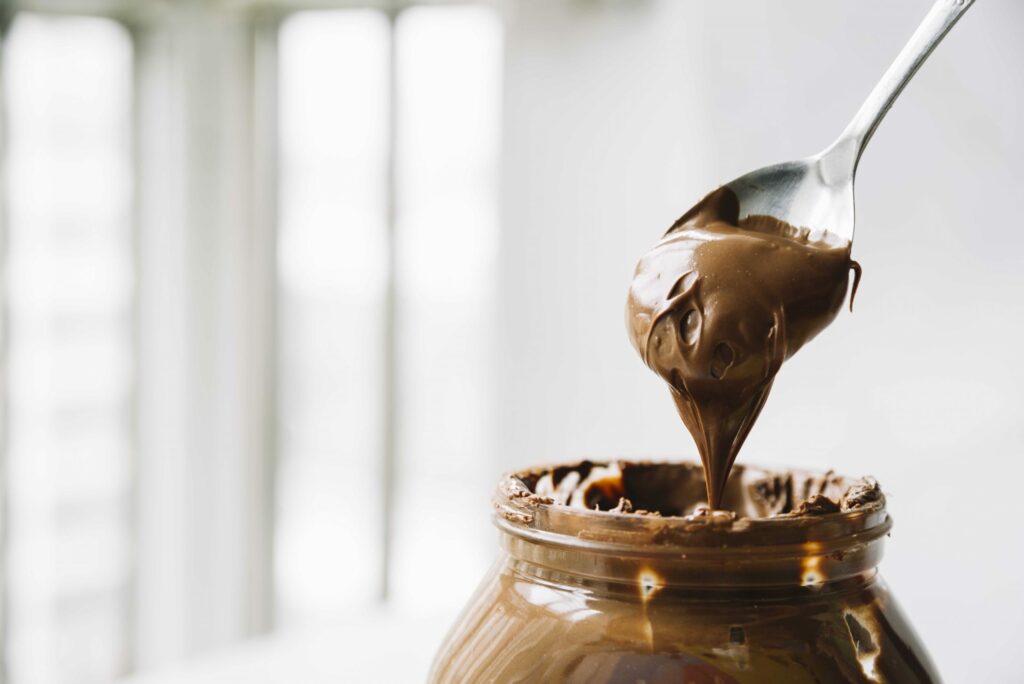
It’s easy to swish out glass bottles and let them drip dry before adding them to the recycling bin. When you clean your glass recycling, the chances that it will be recycled improve because it’s cheaper to process. Consider designating a basin for staff to rinse and dry their glass recyclables.
#5: Remove Lids and Recycle Separately
While some curbside programs might accept metal or plastic lids from your glass jars – the rule is generally to place them in a separate recycling container (or put them in the trash).
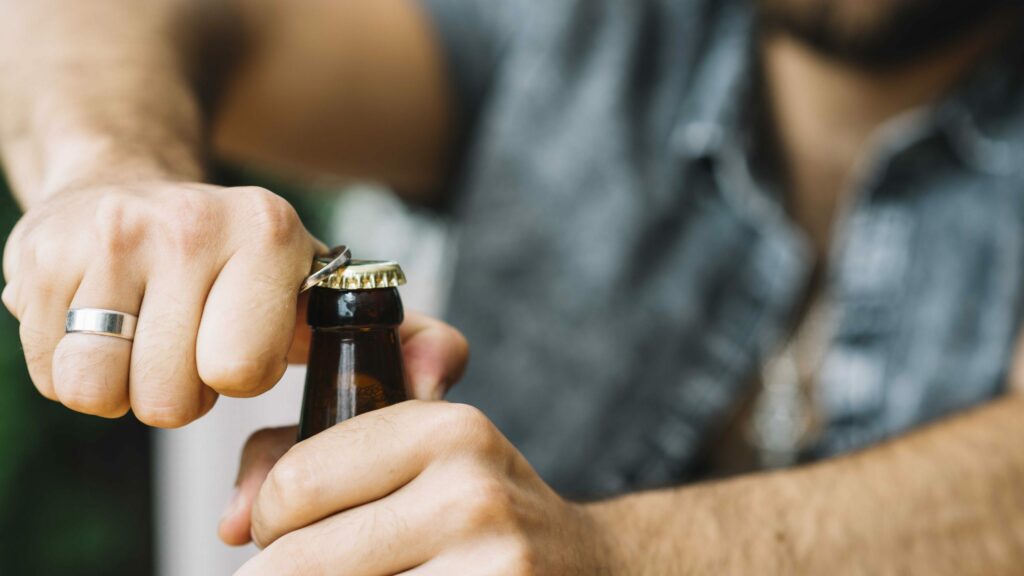
There are so many different types of materials used for lids and caps, that these can cause issues during the recycling process. Instead, keep your recycling material clean and free of lids by committing them to a separate program, or throwing them away before depositing the glass.
#6: Leave the Labels On
Glass labels can be sticky and a serious challenge to remove from the containers. Luckily, there is no real need to remove these labels from your glass recyclables.

During the recycling process, the sorted materials that make it to the processing stages will be exposed to enough heat to take care of those pesky labels. Stop removing labels, and instead place the focus on keeping the glass safe, unbroken, and clean for your local recycling center.
#7: Never Mix Types of Glass
Most local curbside recycling programs only collect food-related glass (jars, bottles, bowls) and not things like mirrors, windows, or tiling. Never mix different types of materials when glass recycling.
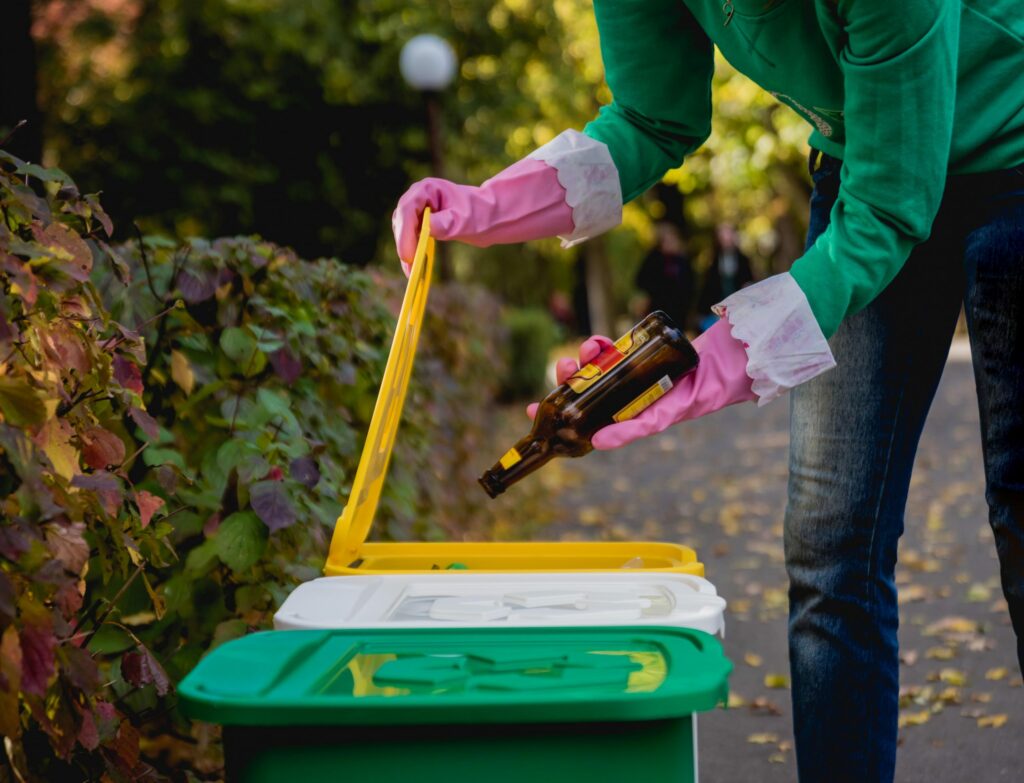
Some types of glass contain chemicals or require a much more intensive recycling process to break down. If your company has a lot of recyclable sundry glass, find a program outside of what your local municipality offers. Just make sure this glass is not mixing with your food-related recyclables.
#8: Check on Your Municipality Requirements
The easiest way to up your glass recycling game is to refer to your local curbside recycling program. Using the Recycle Coach app, you can find out exactly what the municipality wants you to do.

Once you know the hard-and-fast rules of glass recycling in your area, mock-up an infographic for your employees. Use striking visuals to show them how to recycle glass correctly, to make the materials coming from your company high value, clean and easy to process.
Start by reviewing these 8 tips, then adapt them according to the needs of your local municipality. Soon, your employees will know the ins-and-outs of what to do with glass materials.
What is the most common glass item you recycle at work?